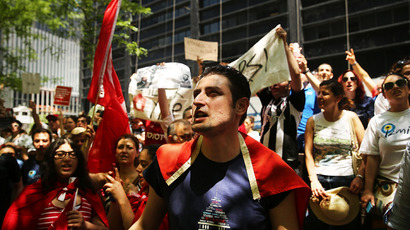2 years after Occupy Wall Street: Poverty persists, economic inequality grows
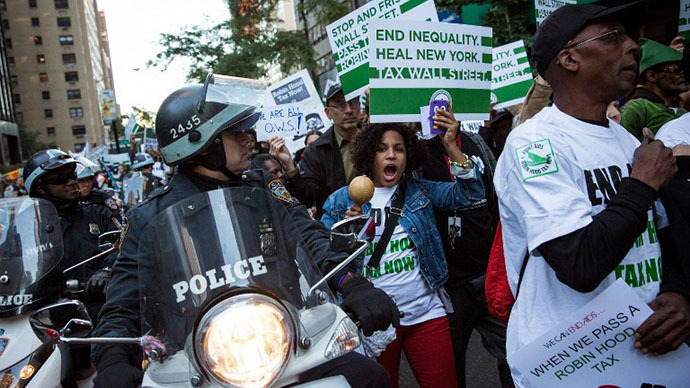
Thousands of Occupy protesters demonstrated in New York City to mark the second anniversary of the movement on Tuesday, just as new figures show that poverty remains steady and the so-called “1 percent” have only grown wealthier.
Small groups of protesters marched near Zuccotti Park, the birthplace of the movement in 2011, while others marched through Washington Square Park and other areas of Manhattan.
At least 1,000 protesters were seen moving from the United
Nations building to the headquarters of JP Morgan Chase bank, one
of the Occupy movement’s prime targets.
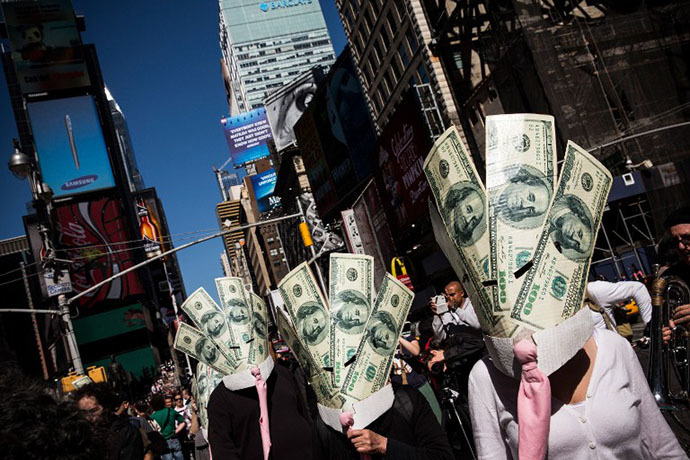
“We’re still out here fighting for economic justice. The bankers still have all the power,” protester Linnea Paton told AP. “They’ve brought our government and we need a people’s movement to do that, and the movement is still here.”
The initial movement that pitted the top one percent of
wealthiest Americans against the other 99 percent quickly spread
from New York across the US, and was emulated around the world.
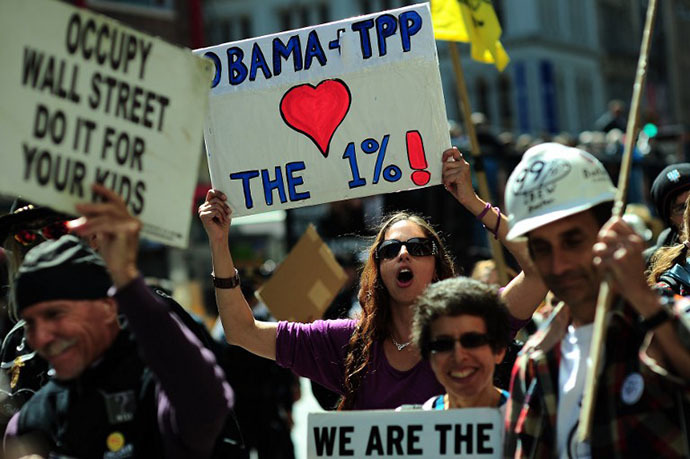
New York’s Occupy movement evaporated after Mayor Michael Bloomberg dispatched the New York Police Department to destroy the Zuccotti Park encampment in November 2011. But the demonstrators returned in the aftermath of Hurricane Sandy, helping with rebuilding efforts and volunteering at makeshift food distribution centers.
Occupy has most recently supported the ongoing Fast Food protests, helping workers from major corporations like McDonalds and Wendy’s rally for fair wages and safer work conditions.
“Lifting wages will help bring more economic justice to
workers and improve their quality of life and living
standards,” Occupy wrote in a recent statement. “This will
be the beginning of an independent and grass roots campaign to
bring awareness to the plight of fast food and low wage workers
in a city where half of its residents live near or below
poverty.”
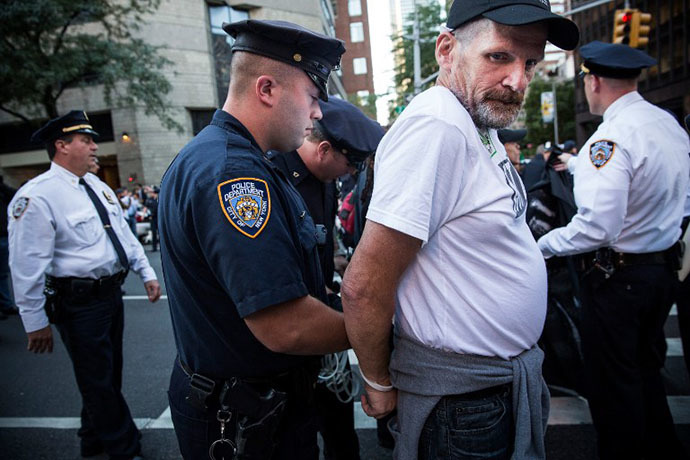
On the same day as Occupy Wall Street’s second birthday, the US Census Bureau published its report on income, poverty, and health insurance coverage in the US. The results indicate that while the Occupy movement was correct in its claims of inequality, the cause still has a difficult path ahead.
“Median household incomes in the United States in 2012 was $51,017, not statistically different in real terms from the 2011 median of $51,100. This followed two consecutive annual declines,” the report stated.
“The nation’s official poverty rate in 2012 was 15 percent,
which represents 46.5 million people living at or below the
poverty line. This marked the second consecutive year that
neither the official poverty rate nor the number of people in
poverty were statistically different from the previous year’s
estimates. The 2012 poverty rate was 2.5 percentage points higher
than in 2007, the year before the economic downturn.”
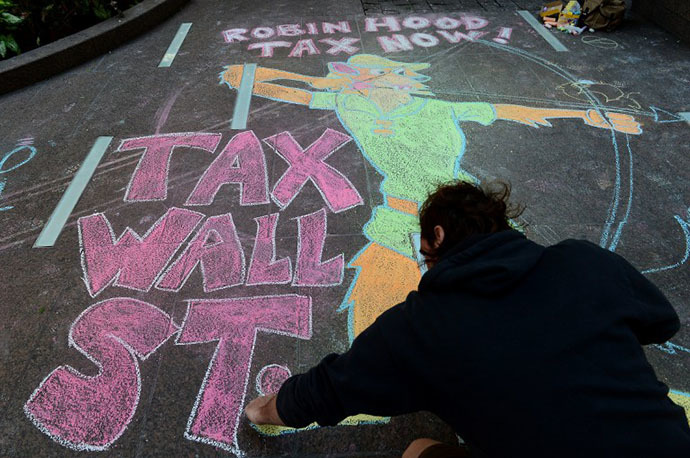
Meanwhile, research produced by economists at the University of California-Berkeley, the Paris School of Economics, and Oxford University has revealed that the richest one percent of the US population received almost one-fifth of household income in 2012, breaking the previous record set all the way back in 1928.
Similar figures were recently issued by the Pew Research Center in April, analyzing the period between 2009 and 2011. That study suggested that only the top seven percent of American households experienced an increase in their net worth during those years.
Still, skeptics wonder who is in control of the movement - the
same problem that plagued the group in 2011.
A number of subgroups have sprouted, each with different – if
related – causes, including Alternative Banking Working Group of
Occupy Wall Street, Families of Police Violence, Money Wars
Performers, Occupy Staten Island, and Occupy Wall Street
Zapatistas.
“We’re here to celebrate two years: We’re still here, still
fighting, still strong,” demonstrator Sumumba Sobukwe told a
number of protesters gathered in New York City Tuesday. “And
we’re still Occupy.”















